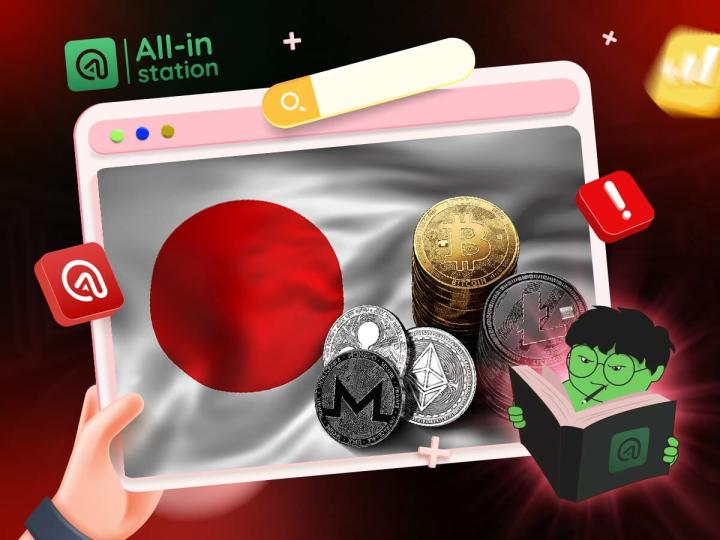Table of Contents
ToggleAs Non-Fungible Tokens (NFTs) become increasingly popular and a trend in the digital world, platforms that help users trade NFTs – called NFT Marketplaces – are gradually becoming an indispensable part of the Web3 ecosystem.
If you are a newcomer, understanding what an NFT Marketplace is, how it operates, and its types is an important step before participating in NFT investment or creating your own NFT product. Let's explore the concept, characteristics, and the most popular NFT Marketplaces through the following article.
What is an NFT Marketplace?

An NFT Marketplace is an online platform that allows users to create, buy, sell, auction, and collect NFTs easily. This can be seen as a "digital marketplace" where unique digital assets are traded between users on a blockchain platform.
Here, users can:
- Create and mint NFTs from images, videos, music, or other digital assets.
- List NFTs for sale at a fixed price or through auction.
- Buy NFTs from others using cryptocurrencies like ETH, BNB, SOL...
- Manage, trade, and showcase their owned NFT portfolio.
Most marketplaces use smart contracts to automate trading activities and ensure transparency, security, and immutability of information on the blockchain.
Why are NFT Marketplaces important in the Web3 ecosystem?

NFT is one of the most prominent applications of blockchain technology – the underlying technology of Web3. While DeFi changes how we approach decentralized finance, NFTs open a new era of digital asset ownership. And for NFTs to be created, bought, and traded transparently and organizationally, NFT Marketplaces are the crucial infrastructure piece.
Marketplaces also act as a trusted intermediary connecting creators, investors, and the community. Moreover, NFT Marketplaces are places to implement new features like NFT staking, revenue sharing from royalty fees, NFT Launchpad sales, exclusive auctions, collection management, and many other utilities.
NFT Marketplace Classification: Based on what criteria?
Currently in the market, there are various NFT Marketplaces built to serve specific purposes and user groups. Below are some common criteria for classifying Marketplaces:
- Classification by operating model
- Classification by blockchain ecosystem
- Classification by purpose of use
NFT classification by operating model
Open Marketplace
- Anyone can participate in minting, buying, and selling NFTs.
- No restrictions on asset types or NFT standards.
- Examples: OpenSea, Blur, Magic Eden, LooksRare.
- Advantages: Easy to access, high liquidity, suitable for both creators and investors.
- Disadvantages: Low-quality or spam NFTs may appear.
Curated/Exclusive Marketplace
- NFTs are carefully curated or selected.
- Usually focused on high-end digital art or special collections.
- Examples: SuperRare
- Advantages: High quality, ensures artistic value, attracts serious collectors.
- Disadvantages: Difficult to access for newcomers or artists without reputation.
Classification by blockchain ecosystem
An NFT created on a specific blockchain can only be traded on marketplaces compatible with that blockchain (except for cross-chain supporting platforms).
- Ethereum-based: OpenSea, Rarible, Foundation…
- BNB Chain-based: Binance NFT, TofuNFT…
- Solana-based: Magic Eden, Solanart…
- Polygon-based: PlayDapp, Refinable…
- Multichain/Cross-chain: OpenSea (ETH, Polygon, Solana), Magic Eden (ETH, Solana, Polygon, Bitcoin), Element Market…
Classified by Purpose
- Art and Entertainment Non-Fungible Tokens: Focusing on art Non-Fungible Tokens, digital photos, videos, music, popular culture (SuperRare, Foundation, Zora)
- Gaming & Metaverse Non-Fungible Tokens: Marketplace specifically serving blockchain games or metaverse, where users trade items, land, skins (Fractal, Gala Games, Sandbox Marketplace)
- Financial Non-Fungible Tokens: Trading Non-Fungible Tokens related to DeFi, staking, yield farming, access rights,… (Uniswap v3 LP Non-Fungible Tokens, Non-Fungible Token Lending Protocols)
Potential of Non-Fungible Token Trading Platforms

Non-Fungible Token Marketplace in Crypto is a place that allows users to create, buy, sell, auction, and trade digital assets in the form of Non-Fungible Tokens on blockchain. This is not just a place to exchange digital artworks or game items, but also serves as a connection center for fields such as decentralized finance (DeFi), metaverse, music, digital real estate, and many other new fields in the Web3 world.
With the rapid development of blockchain technology, Non-Fungible Token Marketplace is expanding its application potential, becoming an important part of the Crypto ecosystem, where digital assets are verified for ownership, affirmed in value, and easily traded across chains, moving towards a sustainable and decentralized digital economy.
Summary
Non-Fungible Token Marketplace is not just a place for digital asset trading but also an important infrastructure platform that helps the Non-Fungible Token and Web3 ecosystem develop sustainably. Depending on the purpose of use, preferred blockchain, and level of censorship, you can choose the appropriate Marketplace to mint, buy, sell, or invest in Non-Fungible Tokens.
If you are a beginner, start with open platforms that support multiple blockchains like OpenSea, Magic Eden, or Binance NFT to easily experience. After understanding how they work, you can explore more specialized platforms for art or gaming. Hope this article from Allinstation has been helpful for beginners!






